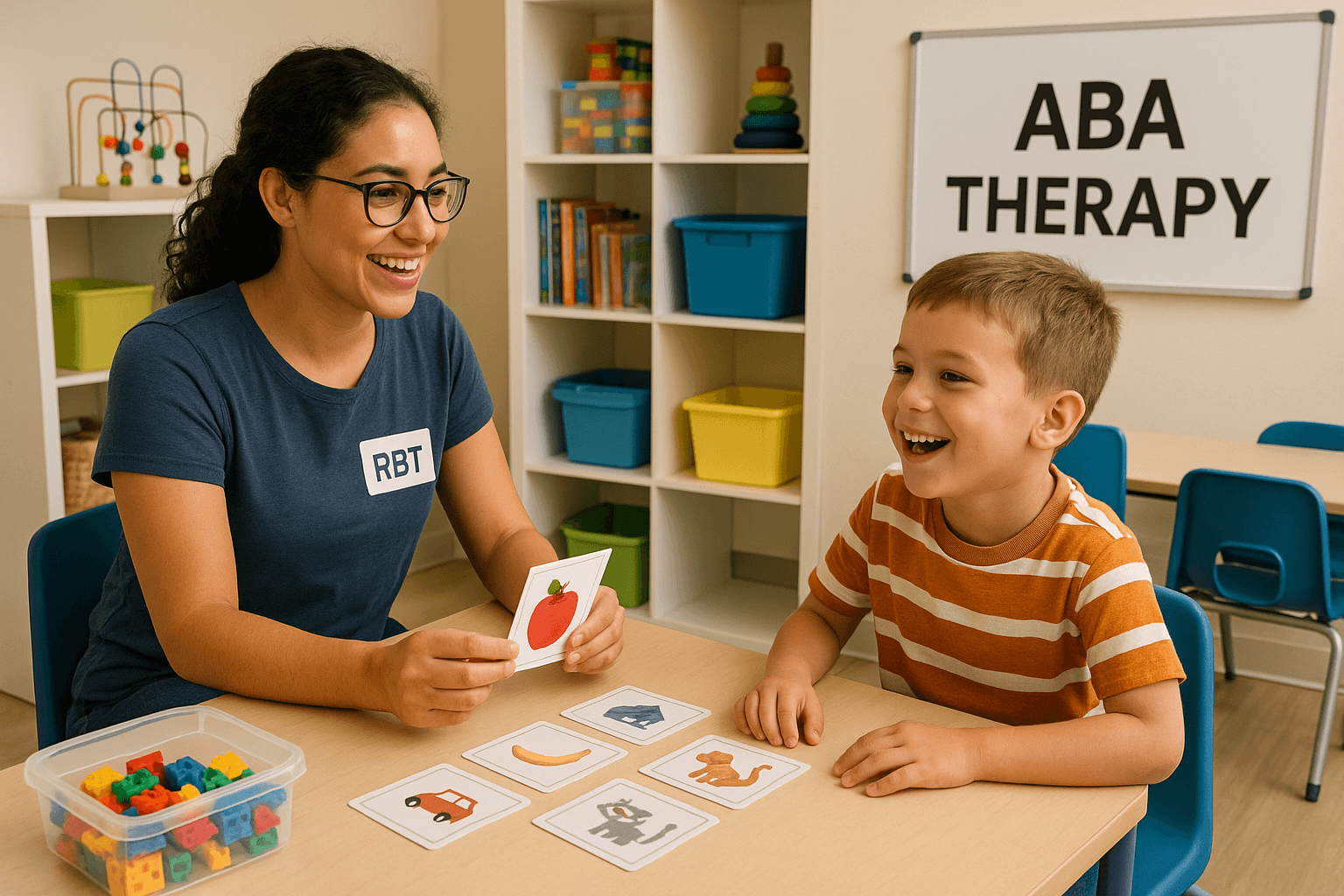10 Benefits of ABA Therapy for Autism
Autism Spectrum Disorder (ASD) is a complex neurological condition affecting individuals in various ways, impacting social communication, behavior, and receptive experiences, particularly for those seeking autism therapy. The quest for effective treatments is ongoing, with families, caregivers, and professionals continually seeking ways to support individuals with autism, especially in the context of autism therapy. While there's no one-size-fits-all approach, several strategies and techniques have shown promise in providing transformative care. In this article, we'll explore ten ultimate solutions for autism therapy, focusing on cost-effective strategies and insider tricks to enhance the quality of life for individuals with ASD.
Here are ten benefits of ABA Therapy
Targeted Behavior Modification
Applied Behavior Analysis (ABA) therapy is renowned for its systematic approach in modifying behaviors effectively. By breaking down complex behaviors into manageable steps, individuals with Autism Spectrum Disorder (ASD) can acquire new skills and reduce problematic behaviors. This approach, founded on precise observation and analysis, empowers individuals to navigate their daily lives more effectively and with increased independence. Targeting behaviors specific to an individual's needs allows for personalized growth and development.
Individualized Treatment Plans
One of the key strengths of ABA therapy lies in its dedication to crafting tailored treatment plans for each individual with ASD. Recognizing the unique characteristics and challenges of each person, therapists meticulously design interventions that resonate with the individual’s preferences, strengths, and areas for growth. This customized approach ensures that the therapy maximizes its effectiveness by addressing specific needs, fostering progress, and catering to the individual's pace and learning style.
Enhanced Communication Skills
ABA therapy excels in addressing the communication difficulties often associated with ASD. Through specialized strategies and interventions, individuals are guided towards significant improvements in both verbal and non-verbal communication. These techniques not only enhance language development but also facilitate better social interaction and understanding, empowering individuals to express themselves more effectively and engage more confidently in social settings.
Social Skills Development
A fundamental aspect of ABA therapy involves nurturing social skills. Therapists focus on teaching essential social behaviors, such as turn-taking, interpreting social cues, and initiating conversations. These interventions aim to instill confidence in individuals, enabling them to navigate social interactions more comfortably and effectively, ultimately contributing to their overall social integration and well-being.
Functional Life Skills Acquisition
ABA therapy places a significant emphasis on equipping individuals with ASD with functional life skills crucial for independent living. From basic self-care routines to more complex household tasks, individuals are guided through a structured process that enables them to acquire and refine these essential life skills. This acquisition not only fosters independence but also contributes to their overall well-being and integration within their environment.
Positive Reinforcement Techniques
Central to ABA therapy is the utilization of positive reinforcement techniques. This approach involves rewarding desired behaviors, thereby motivating individuals and reinforcing their progress. By providing tangible rewards and positive feedback for targeted behaviors, ABA therapy creates an environment conducive to effective learning and skill development. Such positive reinforcement not only encourages the repetition of desired behaviors but also boosts self-esteem and confidence in individuals, fostering a more conducive atmosphere for growth.
Reduction of Challenging Behaviors
Addressing and mitigating challenging behaviors like tantrums, aggression, or self-injury is a critical focus of ABA therapy. Through carefully designed interventions, therapists aim to replace these challenging behaviors with more appropriate alternatives. By employing strategies that understand the underlying triggers and reinforce positive behaviors, ABA therapy assists individuals in managing their emotions and responses more effectively, leading to improved overall functioning and social interactions.
Consistency and Generalization of Skills
ABA therapy aims for consistency and skill generalization across various settings and situations. It strives to ensure that the skills learned during therapy sessions are not limited to those controlled environments but are effectively applied and reinforced in real-life scenarios. This approach enhances the individual's ability to generalize learned behaviors, ensuring that the acquired skills are readily applicable and sustained beyond the therapy sessions, ultimately promoting greater independence and functionality.
Family Involvement and Support
Recognizing the indispensable role of families in an individual's growth, ABA therapy actively involves and supports parents and caregivers. This involvement goes beyond the therapy sessions, educating and equipping families with strategies and tools to support their loved ones. By providing the necessary support and guidance, ABA therapy ensures a collaborative effort between therapists and families, creating an environment conducive to continuous growth and development for individuals with ASD.
Long-Term Positive Outcomes
Extensive research underscores the substantial and enduring benefits of consistent ABA therapy. Early intervention and continued treatment have shown significant improvements in behavior, communication, and independence in individuals with ASD. The long-term positive outcomes of ABA therapy greatly contribute to enhancing the overall quality of life for individuals on the autism spectrum, offering a promising path towards a more fulfilling and independent future.
Conclusion
Applied Behavior Analysis (ABA) therapy emerges as a beacon of hope for individuals navigating the complexities of Autism Spectrum Disorder (ASD). Its multifaceted approach, encompassing targeted behavior modification, individualized treatment plans, and the nurturing of essential life skills, stands as a transformative intervention method. Through the dedication of therapists, families, and individuals themselves, ABA therapy paves the way for remarkable progress and meaningful improvements in behavior, communication, and overall quality of life.
The holistic benefits of ABA therapy extend far beyond its structured techniques. By addressing the unique needs of each individual and fostering a supportive environment for growth, it empowers individuals with ASD to thrive, enhancing their confidence, independence, and social integration.
As we advocate for inclusivity and support for those with ASD, the journey continues with collaborative efforts between therapists, families, and communities. Should you seek guidance or wish to explore the transformative potential of ABA therapy, we invite you to reach out to us at Contact Us. Together, let’s pave the way for a brighter, more inclusive future for individuals on the autism spectrum.
FAQs
What is Autism Spectrum Disorder (ASD)?
Autism Spectrum Disorder (ASD) is a complex neurological condition that affects individuals in various ways, impacting social communication, behavior, and receptive experiences.
What is the focus of autism therapy?
Autism therapy aims to support individuals with ASD by addressing their unique challenges in social communication, behavior, and experiences, with a focus on improving their quality of life.
What are some critical aspects of effective autism therapy?
Effective autism therapy involves personalized strategies, behavior modification techniques, and interventions tailored to individual needs.
What is Applied Behavior Analysis (ABA) therapy?
ABA therapy is a systematic approach that breaks down complex behaviors into manageable steps, helping individuals with ASD acquire new skills and reduce problematic behaviors.
How does ABA therapy benefit individuals with ASD?
ABA therapy benefits individuals by offering individualized treatment plans, enhancing communication skills, developing social skills, and acquiring functional life skills.
Why is individualized treatment necessary in ABA therapy?
Individualized treatment plans in ABA therapy cater to the unique characteristics, strengths, and challenges of each person with ASD, ensuring the treatment maximizes its effectiveness.
How does ABA therapy address communication difficulties?
ABA therapy employs specialized strategies to significantly improve both verbal and non-verbal communication skills significantly, aiding better expression and social interaction for individuals with ASD.
What social skills does ABA therapy focus on?
ABA therapy focuses on teaching essential social behaviors such as turn-taking, interpreting social cues, and initiating conversations to help individuals navigate social interactions more comfortably.
What life skills are emphasized in ABA therapy?
ABA therapy emphasizes acquiring functional life skills crucial for independent living, ranging from basic self-care routines to more complex household tasks.
How does ABA therapy utilize positive reinforcement?
ABA therapy uses positive reinforcement techniques by rewarding desired behaviors, motivating individuals, boosting self-esteem, and encouraging the repetition of positive behaviors.
What is the aim of reducing challenging behaviors in ABA therapy?
ABA therapy aims to replace challenging behaviors with more appropriate alternatives by understanding triggers, employing strategies, and reinforcing positive behaviors.
How does ABA therapy ensure skill generalization?
ABA therapy strives for consistency and generalization of learned skills across various settings and situations to ensure their application in real-life scenarios.
What role do families play in ABA therapy?
Families are integral in ABA therapy, with active involvement and support, providing the necessary education, tools, and strategies to aid the growth of individuals with ASD.
What are the long-term outcomes of ABA therapy?
Extensive research highlights the enduring benefits of consistent ABA therapy, showing improvements in behavior, communication, and independence for individuals with ASD.
How does ABA therapy contribute to the overall quality of life for individuals on the autism spectrum?
ABA therapy offers promising long-term outcomes, significantly enhancing the overall quality of life by promoting independence, communication, and social functioning for individuals with ASD.











